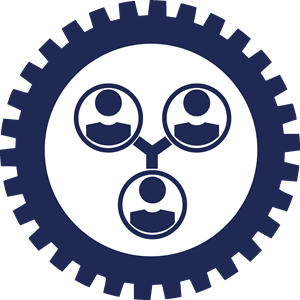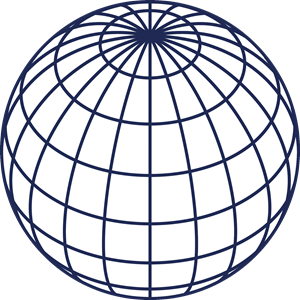
Global Onchocerciasis Network for Elimination (GONE)
A man who suffers from onchocerciasis at the Masongbo health center in the town of Masongbo, Sierra Leone.
About us
The Global Onchocerciasis Network for Elimination (GONE) drives a global partnership platform supporting countries to reach the global targets for elimination of onchocerciasis for 2030 set in the WHO road map for neglected tropical diseases.
The GONE network is open to all onchocerciasis stakeholders with demonstrated commitment to working towards the 2030 road map targets for onchocerciasis elimination.
- To be inclusive and diverse in membership and structure, ensuring adequate representation from different stakeholder groups and geographical regions;
- To be transparent in all processes, including the operational strategy and GONE activities;
- To ensure all activities align with WHO’s norms and standards;
- To facilitate coordination among interested parties to advance WHO’s priorities on the road map 2030.
Main objectives
- To provide an inclusive and open access forum to improve communication, coordination, partnership and community of practice for all onchocerciasis stakeholders working closely to reach the 2030 road map targets for elimination of onchocerciasis.
- To conduct action oriented and effective advocacy working towards the 2030 road nap targets and milestones for onchocerciasis elimination.

Vision
To SEE onchocerciasis GONE!

Mission
To accelerate progress towards the achievement of the 2030 road map targets for onchocerciasis elimination.
Road map targets for onchocerciasis
The road map targets for the elimination of onchocerciasis are, by 2030: to stop mass drug administration (MDA) of ivermectin in at least one focus in 34 countries; to stop MDA in more than 50% of the population in at least 16 countries; to stop MDA in the entire endemic population of at least 12 countries; and to verify interruption of transmission in 12 countries.
Related publication
Ending the neglect to attain the Sustainable Development Goals: A road map for neglected...
Progress of onchocerciasis status worldwide
Resources and news
WHO publications
All →National onchocerciasis elimination committees: a handbook for expert advisory groups in Africa
National onchocerciasis elimination committees (NOECs) play a vital role in national neglected tropical disease (NTD) programmes. The purpose of this...
Elimination of human onchocerciasis: progress report, 2024–2025
Onchocerciasis, or river blindness, remains a major public health challenge despite decades of sustained efforts. More than 99% of population requiring...
External publications
Blogs
/202309_who_ghana-day02_126_fullres.tmb-144v.jpg?sfvrsn=2e91330a_2)
WHO guidelines and manuals in process
- Integrated post-validation and post-verification surveillance planning toolkit for neglected tropical diseases: A planning toolkit
- A mapping and treatment strategy for Onchocerciasis in Loa coendemic settings
- Alternative treatment strategies for Onchocerciasis and other parasitic infections
Latest news
All →Feature story
Events
All →Webinar reports
All →/gone-webinar--loiasis-a-very-neglected-disease-in-central-africa.tmb-144v.png?sfvrsn=829b4b9_2)
Loiasis constitutes an important barrier to onchocerciasis control in co-endemic areas of Central Africa. Caused by the filarial parasite Loa loa and transmitted...
/gone-webinar-strengthening-health-systems-through-ntd-integration-country-experiences-and-innovative-approaches.tmb-144v.png?sfvrsn=4fe8ba86_2)
The webinar highlighted the strategic value of integrating NTD interventions into broader health systems. Countries like Benin, Kenya, Rwanda, and Madagascar...
Cross-border collaboration
According to the 2016 WHO guidelines for stopping MDA and verification of elimination of onchocerciasis, acknowledgment of elimination requires that areas immediately surrounding a country have interrupted transmission. Efficient and active cross-border coordination is required to achieve elimination targets and to prevent recrudescence where interruption of transmission has been achieved.
Enhancing cross-border collaboration is one of the priority areas of the GONE network. Endemic areas that contain national borders present an important challenge to the success of elimination of onchocerciasis and require unification of programme activities. The effectiveness of cross-border collaboration can be hindered by issues such as inadequate financial resources, logistical challenges for synchronizing elimination strategies, language barriers, insecurity, conflict, and population mobility.
High-level advocacy to establish collaboration agreements between countries, resource mobilization to support cross-border activities, data collection and sharing have been identified as priorities. Synchronization of MDA, inclusion of cross-border collaboration activities in the meeting agendas of the Onchocerciasis Elimination Committee and the empowerment of local district working groups have also been identified as important factors for improving cross-border collaboration. National onchocerciasis elimination programmes collaborate to ensure that no one is left behind.
GONE is collaborating with Sightsavers who have created an open-access geospatial application called CrossRoads to support Ministries of Health and implementing partners with cross-border geographic data review. GONE is gathering cross-border data and facilitating trainings on the application. More country group applications will be finalized over the coming months.
At this website you can find more information on CrossRoads.
On 21 May 2025, GONE in collaboration with the African Union Commission, The END fund and Drugs for Neglected Diseases initiative (DNDi) organized a high-level side event themed “Accelerating NTD elimination through country-driven efforts and cross-border collaboration,” held on the margins of the 78th World Health Assembly.
Global Health leaders of Cameroon, Niger and Nigeria launched a Call for Action inviting other Member States to also endorse the Call. This initiative aims to strengthen cross-border collaboration against NTDs by coordinating efforts and endorsing joint Memoranda of Understanding (MoUs) to facilitate synchronized interventions, surveillance, and data sharing across borders.
In alignment with the Call for Action, GONE facilitates the consultation and drafting process of an MoU on cross-border collaboration for NTD elimination. On 22 September 2025, NTD programme managers, the African Union Commission, partners, and technical experts convened in a virtual consultation to align on key MoU elements and agree on activity timelines and approval processes. Slide presentations from the meeting are available here.
Following the meeting, NTD programmes, disease focal points, and the ESPEN Regional Programme Advisory Group provided further input to refine the MoU. Next steps will include issuing official correspondence to all participating countries, inviting them to review and endorse the final draft of the MoU to formalize commitments and advance cross-border collaboration for NTD elimination.
National onchocerciasis elimination committees (NOECs)
Following the closure of the African Programme for Onchocerciasis Control (APOC) in 2015 and the release of WHO’s elimination guidelines in 2016, countries began establishing National Onchocerciasis Elimination Committees to provide technical guidance and oversight for national programs. These expert bodies play a critical role in supporting strategic planning and coordination toward achieving elimination goals. Over the past two years, NOEC Chairs have collaborated to share experiences and best practices. The outcome of this effort is the newly published Handbook for National Onchocerciasis Elimination Committees, developed by WHO in collaboration with Prof B.E.B. Nwoke, Chair of the NOEC in Nigeria, and with technical support from WHO’s Onchocerciasis Technical Advisory Subgroup (OTS). This handbook is designed as a practical tool to help NOECs operate more effectively and to strengthen national programs in their elimination efforts. This milestone was made possible thanks to the financial support of the Mectizan Donation Program, whose commitment continues to strengthen global elimination efforts.

/gone-logo-whitebg.tmb-479v.png?sfvrsn=c33f2656_2)
/global-status-pc-2024-onchocerciasis.tmb-549v.png?sfvrsn=a429a704_5)
/progress-onchocerciasis-status-worldwide.tmb-549v.jpg?sfvrsn=47aa747c_14)
/gone-the-new-global-onchocerciasis-network-for-elimination-guinee-the-national-champions-thumbnail.tmb-549v.png?sfvrsn=fb3676f7_1)
/gone-the-new-global-onchocerciasis-network-for-elimination-thumbnail.tmb-549v.jpg?sfvrsn=889f232f_1)


/loiasis-a-very-neglected-disease-in-central-africa-04-december-2025.tmb-549v.png?sfvrsn=91ad6f4b_2)
/consultation-on-cross-border-memorandum-of-understanding--for-neglected-tropical-disease-elimination-22-september-2025.tmb-549v.png?sfvrsn=f49ac776_1)